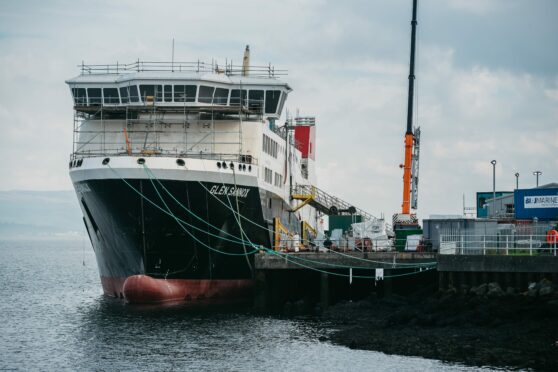
The Danish firm handed a £5m contract to build two huge underground tanks to store gas which will power Scotland’s delayed and over budget ferries have revealed they will not be ready until 2025.
Experts now believe the dual-fuel ships will have to run on diesel when they are finally completed instead of more environmentally friendly Liquefied Natural Gas (LNG).
The news comes as ministers are under renewed pressure to explain why the controversial contract to build two ferries at Ferguson’s shipyard without industry standard guarantees was awarded with no paper trail.
The Glen Sannox, which is due to serve Arran, and the as yet unnamed Hull 802, which will serve Skye, Harris and North Uist, are already £150m over the original budget of £97m and some experts have estimated costs could eventually top £400m.
Experts fear for delayed CalMac ferries’ unused engines with risk of failure after years left idle
State-owned Ferguson Marine is building the new ferries, the first in the UK which can run on conventional diesel and LNG, which produces up to 30% less carbon dioxide. Every week the two ships would require between four and six road tanker loads of LNG, which is likely to be imported from Qatar by sea and driven up from Kent.
Danish company KC LNG was meant to have the LNG bunkering tanks ready to receive tankers this year but ground has not been broken at either ports – Ardrossan or Uig.
The firm’s website hails the £5m order placed in March 2020 by Caledonian Maritime Assets Ltd (CMAL) – the Scottish Government quango which owns ferries infrastructure – but adds the tanks won’t be completed at the beginning of 2025.
Former Scottish Government shipbuilding adviser, Luke van Beek, said: “Bunkering directly from a road tanker is possible but very slow and risky – LNG combusts if it touches water. My guess is that, until the dedicated bunkering is available, they will run on diesel. It does raise the question as to why the LNG capability needs to be commissioned.”
Alf Baird, a former professor of maritime business at Napier University who sat on the Scottish Government’s Expert Ferry Group until it was axed last month, said: “I expect these two boats, if ever delivered, will mainly run on diesel.
“Options to supply LNG include road tanker from the south of England or a small bunker ship coming up every week or so, though small LNG bunker barges are few and far between and this would be a lengthy roundtrip. Either way it seems costly and unnecessary.”
Retired naval architect Euan Haig added: “Direct fuelling from tankers is not unusual but driving a diesel tanker 700 miles there and back makes a mockery of green pretensions.”
CMAL said the final timeline for delivering the LNG bunkering tanks will be dependent on the overall programme of work, which is still being finalised.
KC LNG did not respond to a request for comment.

Enjoy the convenience of having The Sunday Post delivered as a digital ePaper straight to your smartphone, tablet or computer.
Subscribe for only £5.49 a month and enjoy all the benefits of the printed paper as a digital replica.
Subscribe